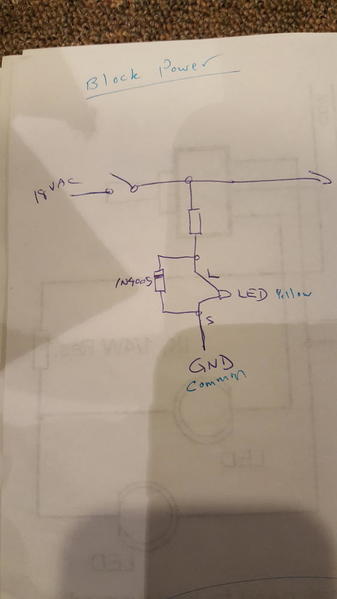First, thank all of you for responding. I spent some time this morning, attempting to make a "basic" diagram of what I have, so all of you can see. It always helps me explain something better with a picture rather than words, especially in this case where I am novice at best! I have not purchased the LED's but I thought 24v would be best since the Z4000 spikes to 21v.
What I am hoping, since I have never worked with on/off switches, indicator lights, etc, is that someone can please look at my picture and "Connect the dots" for me. I am using terminal blocks, I just left them out of this picture to simplify matters.
I my mind, power from the + terminal to the on/off switch, then to the "+", red wire, of the LED, which would be paired/twisted and then connected to the center rail of the track. This way once the switch is in the "On" position, power would flow to the LED, light the LED and power the track. If that is correct, then where does the "-", black wire, on the LED go? Does it go back to the "-" terminal from the power source or to the track?
For some reason I cannot add attachments at this time, once I can I will post the picture I made.
Again, thank you all for your help.
Darren Caruso








